Covid-19 Sector Survey – Report 2021
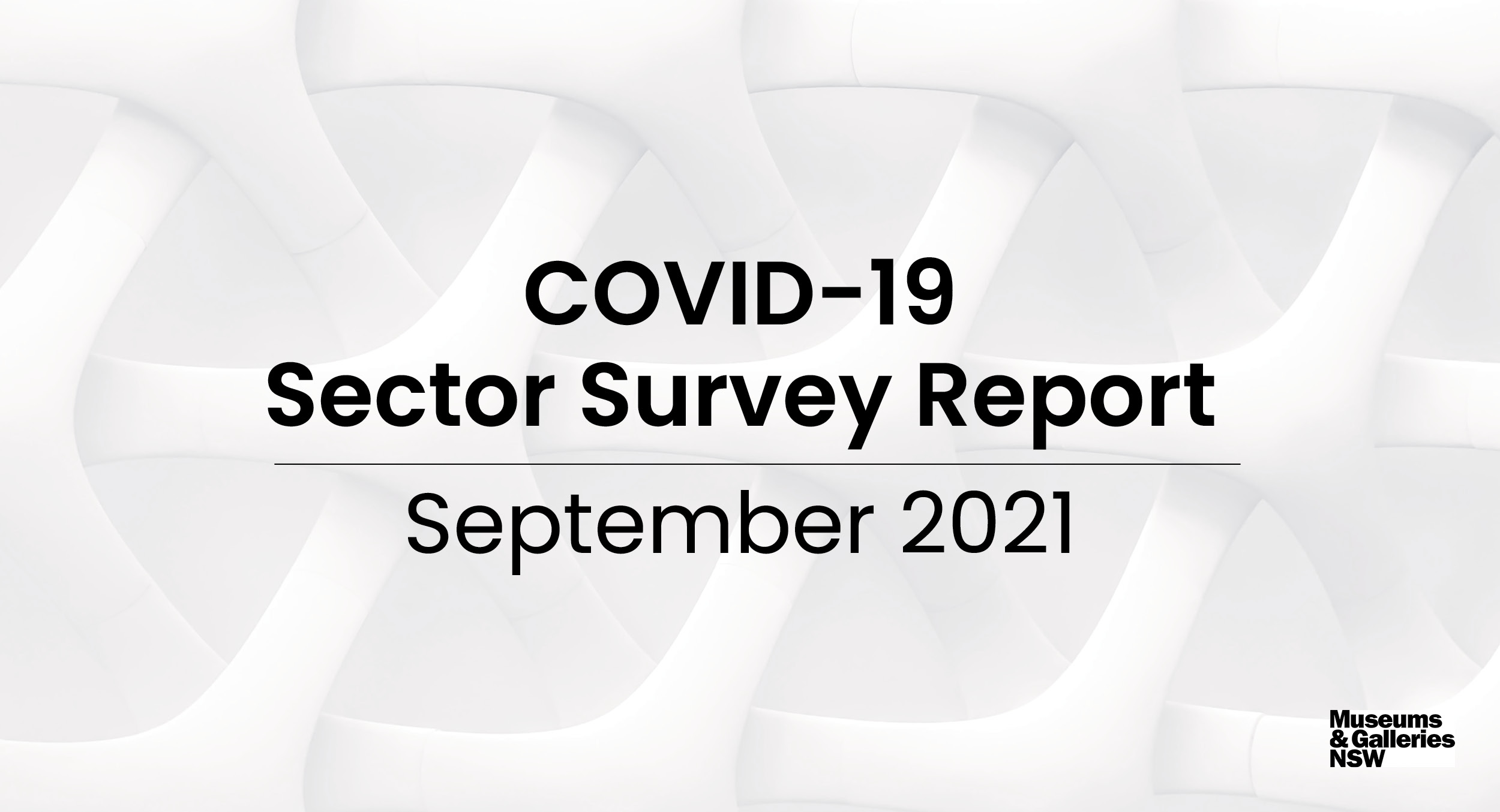 Image by JJ Ying on Unsplash
Image by JJ Ying on Unsplash
SEPTEMBER, 2021
Museums & Galleries of NSW recently conducted a survey of museums, galleries and Aboriginal cultural centres in NSW to get more information on the short and long term effects of COVID-19 and related restrictions on the sector. Participants were asked to complete a short questionnaire about the impact on their organisation. The survey was timed for one year after our 2020 survey in which we saw wide-sweeping consequences for the sector.
While predominantly designed to look at longer term affects and changes in the sector slowly returning to ‘business as usual’, the survey does reflect some of the impacts of increasingly restrictive conditions in Greater Sydney and certain regional areas beginning in June 2021.
The subsequent Greater Sydney lockdown had broader implications for the state at large, which was reflected in the responses of the participants and was followed by a state-wide lockdown, the impact of which is ongoing.
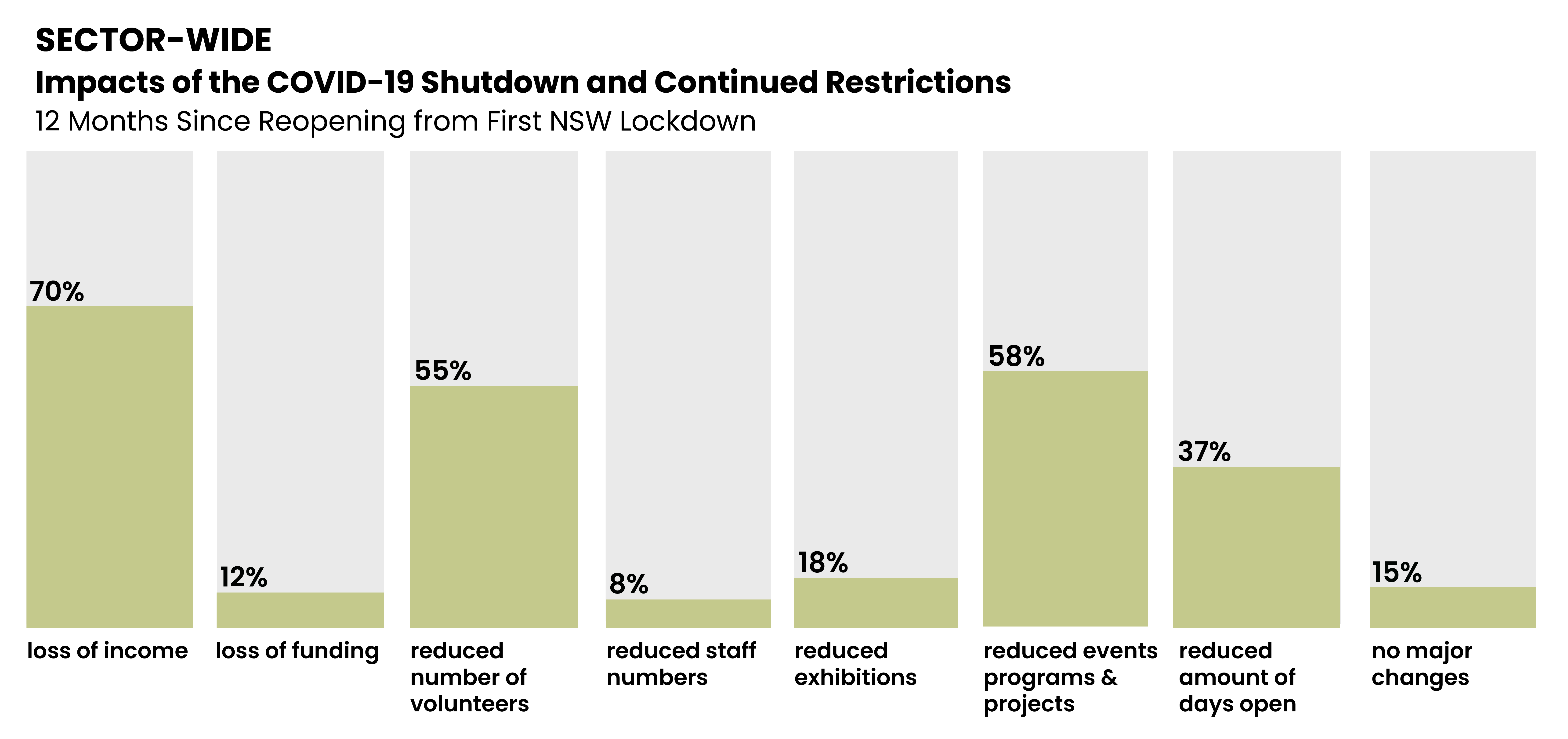
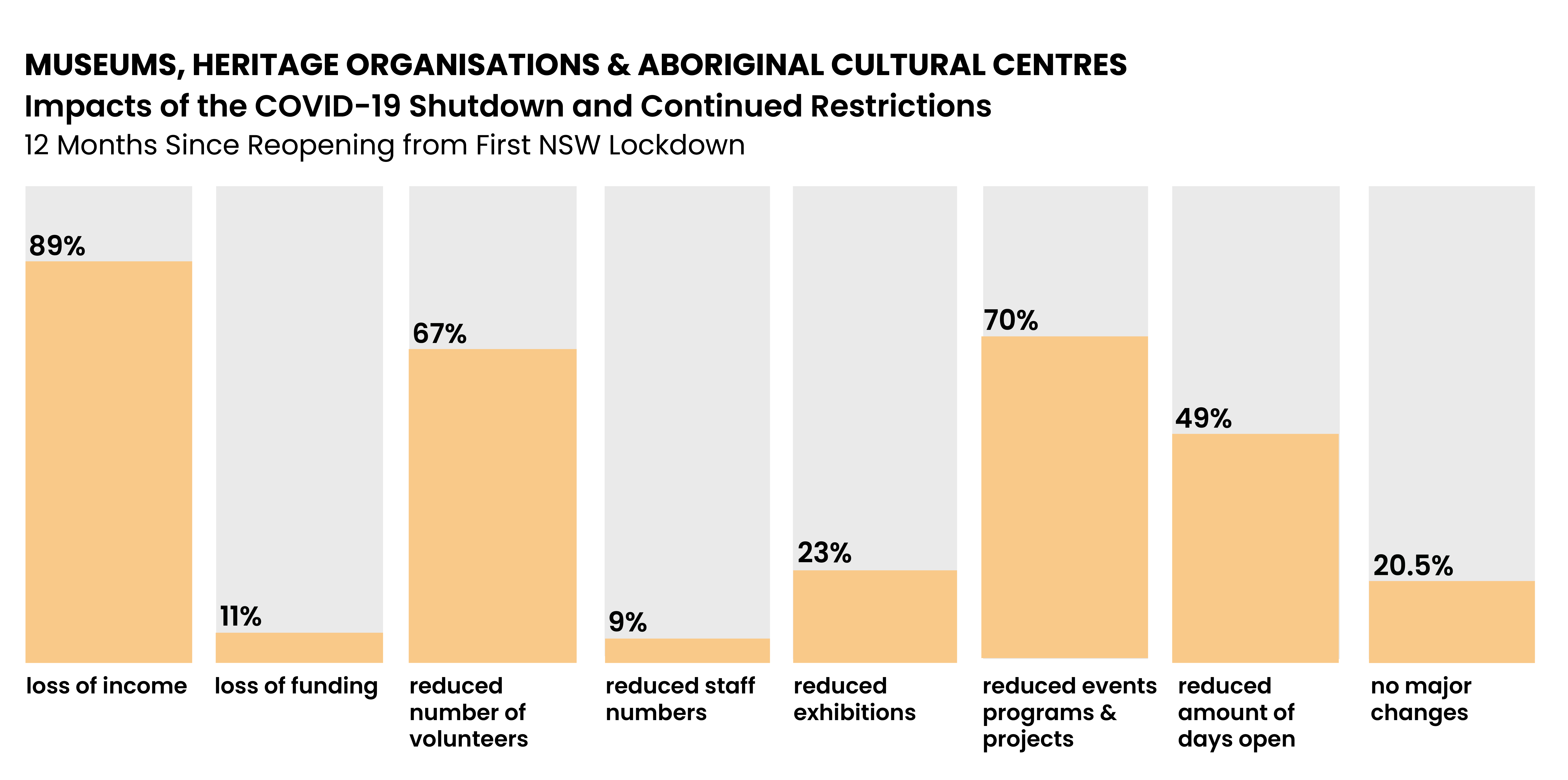
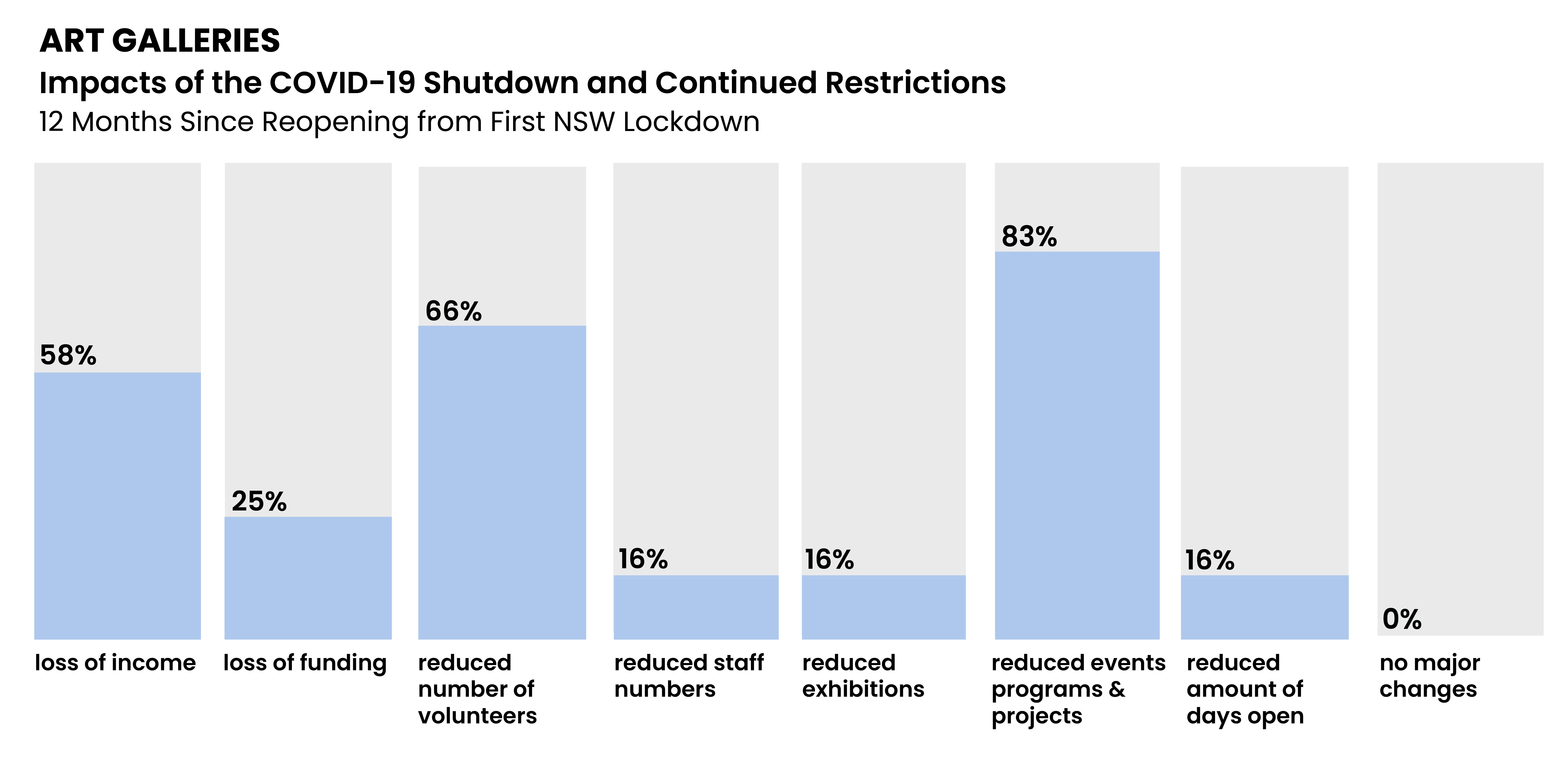 INCOME LOSS
INCOME LOSS
The majority of surveyed organisations indicated an ongoing negative impact upon their operations, with a loss of income (70%) the main issue.
The vast majority of museums in particular rely on entry fees (73%), which has been a major cause of their income loss. A decrease in visitation has also meant a loss in donations.
Those reporting a loss in funding increased by 3% when compared to those who experienced a funding decrease due to COVID in 2020.
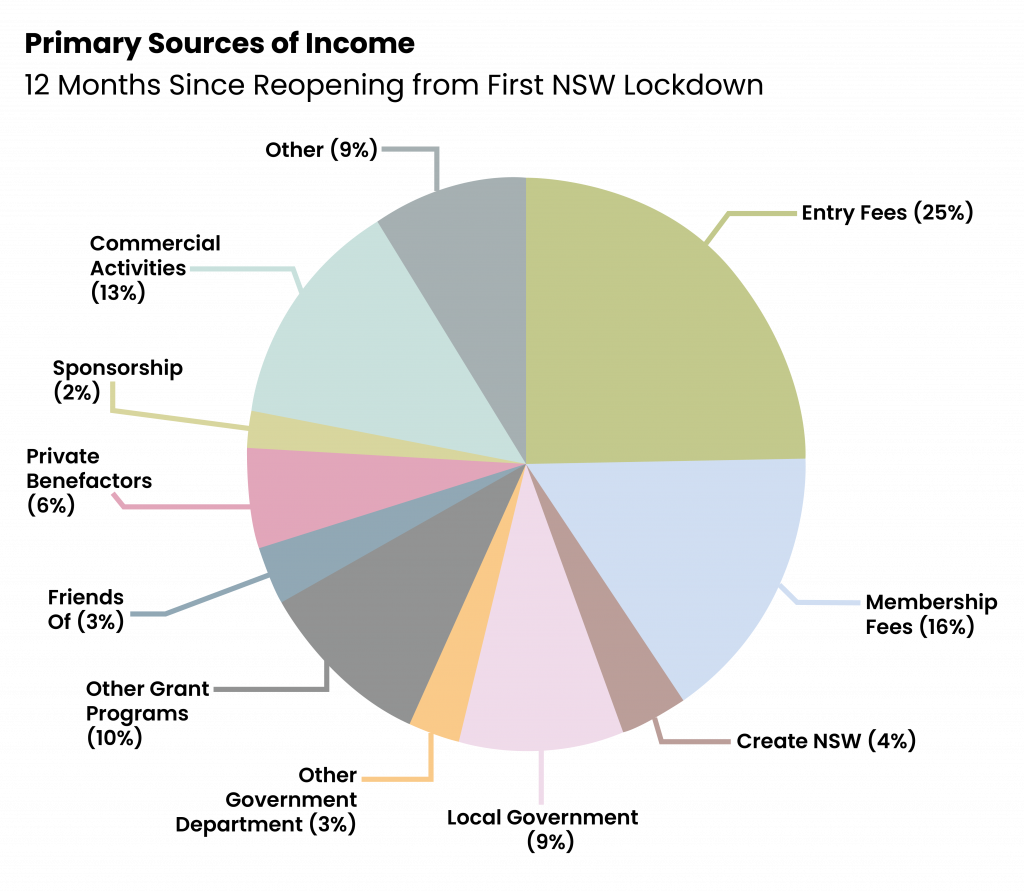
OTHER IMPACTS
During the time the survey was open the Greater Sydney lockdown created a ripple effect with many regional small museums, although permitted to remain open, choosing to close voluntarily due to reduction in visitation and concerns for volunteer workforce. Other major impacts included the reduction in exhibitions, events, public programs and projects.
As with the previous survey in 2020 a high percentage reported a reduction in volunteers. This has been particularly felt by small museums and historical societies.
Around 8% of respondents reported staff losses. Although down from the previous 12 month high of 19% this shows that loss of employment continues to be a very real issue for the sector.
The reduction in number of days that organisations can open demonstrates that many have been unable to spring back to pre COVID operating hours.
Reduced or erratic tourism visitation is continuing to have a severe impact, as is the lack of school visitation. That being said, some regions have benefited from an increase in domestic tourism at certain times when travel restrictions were not in place.
On a positive note 15% of respondents indicated having no major disruptions to their operations, and although some organisations are yet to reopen, there has been no reported permanent closures.
‘We’ve lost 6 volunteers and suffered a 75% decrease in tourism. We were closed for 4 months and are still operating under reduced hours due to our loss of volunteers’
— Small Museum‘Many of our fee-based programs were cancelled or participant numbers reduced. There was also significant loss of income because facility hire activities were put on hold and a reduction in visitor attendance also impacted income from shop sales. While some programs were re-created online, we had a reduction in overall programs and on the number of artists employed by the Gallery to deliver programs’
— Regional Art GalleryOPPORTUNITIES
When respondents were asked if there had been any positive opportunities due the ongoing effects of the pandemic many said the forced closures and a reduction in opening hours had allowed their organisations to conduct renovations, collection maintenance and cleaning as well as cataloguing. Many had also advanced their online offering and/or developed their digital skills and capabilities.
‘We’ve had to reduce the hours that we’re open, as well we’ve not been able to organise or host special events or school groups, which has ultimately meant a reduction in income.’
— Historical Society‘We’ve lost 20% of our volunteers, who have decided not to continue. We received no income from entry fees during the 14 months we were closed, although we still had to pay ongoing costs of insurance, security, electricity, etc, which comes to approximately $800 per month, or over $11,000.’
— Small Museum